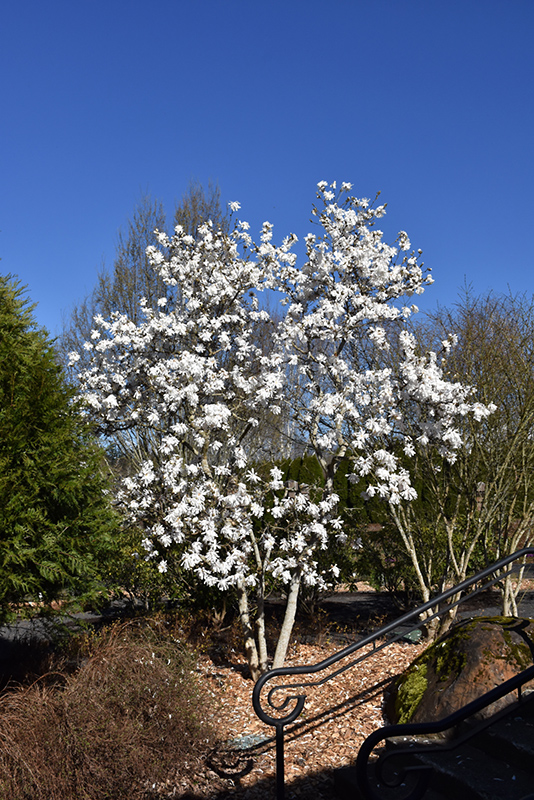Royal Star Magnolia
Magnolia stellata 'Royal Star'
Height: 12 feet
Spread: 12 feet
Sunlight:
![]()
![]()
Hardiness Zone: 4a
Description:
An ideal accent tree for smaller home landscapes, features extremely fragrant star-shaped snow-white flowers in early spring, compact, upright growing and multi-stemmed, fast growing; considered the hardiest magnolia of all
Pollinator Friendly Plants
Have your garden come alive and buzzing with activity with these pollinator friendly plant options. Look for plants tagged with this promotion title: "Pollinator Friendly Plants" to add to your garden. You can also look for pollinator plants by scrolling to the bottom of each plant page and looking for the "butterfly" symbol. Click "Learn more about this promotion!" for some more inspiration and articles from one of our growers, Monrovia!
Learn more about this promotion!
Ornamental Features
Royal Star Magnolia is smothered in stunning fragrant double white star-shaped flowers with yellow eyes at the ends of the branches in early spring before the leaves. It has dark green deciduous foliage. The pointy leaves turn coppery-bronze in fall. The fruits are showy pink pods displayed in early fall.
Landscape Attributes
Royal Star Magnolia is a dense multi-stemmed deciduous shrub with an upright spreading habit of growth. Its average texture blends into the landscape, but can be balanced by one or two finer or coarser trees or shrubs for an effective composition.
This is a relatively low maintenance shrub, and should only be pruned after flowering to avoid removing any of the current season's flowers. Deer don't particularly care for this plant and will usually leave it alone in favor of tastier treats. It has no significant negative characteristics.
Royal Star Magnolia is recommended for the following landscape applications;
- Accent
- Mass Planting
- Hedges/Screening
- General Garden Use
Planting & Growing
Royal Star Magnolia will grow to be about 12 feet tall at maturity, with a spread of 12 feet. It has a low canopy with a typical clearance of 3 feet from the ground, and is suitable for planting under power lines. It grows at a slow rate, and under ideal conditions can be expected to live for 80 years or more.
This shrub does best in full sun to partial shade. It requires an evenly moist well-drained soil for optimal growth, but will die in standing water. It is not particular as to soil type, but has a definite preference for acidic soils. It is quite intolerant of urban pollution, therefore inner city or urban streetside plantings are best avoided, and will benefit from being planted in a relatively sheltered location. Consider applying a thick mulch around the root zone in winter to protect it in exposed locations or colder microclimates. This is a selected variety of a species not originally from North America.


